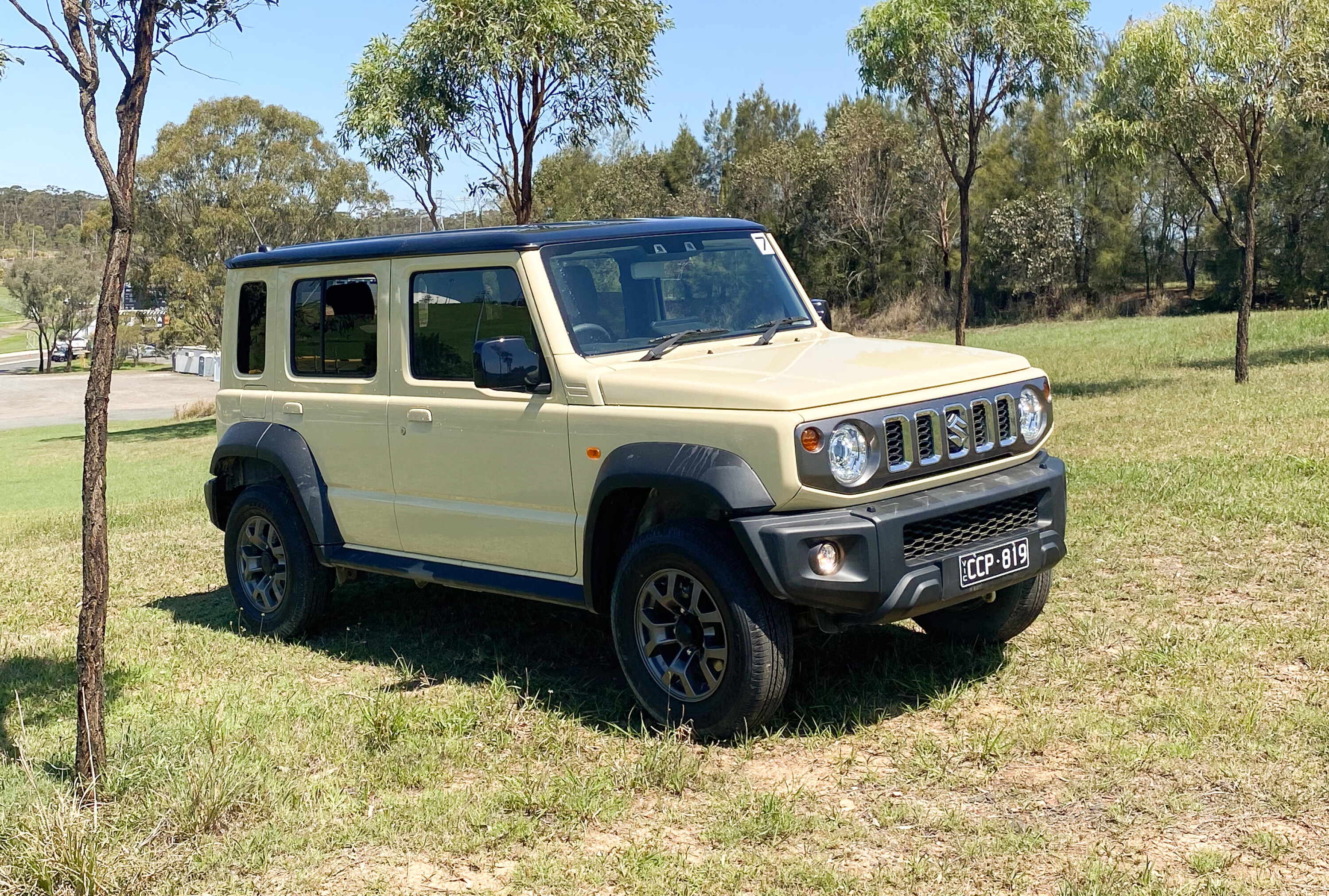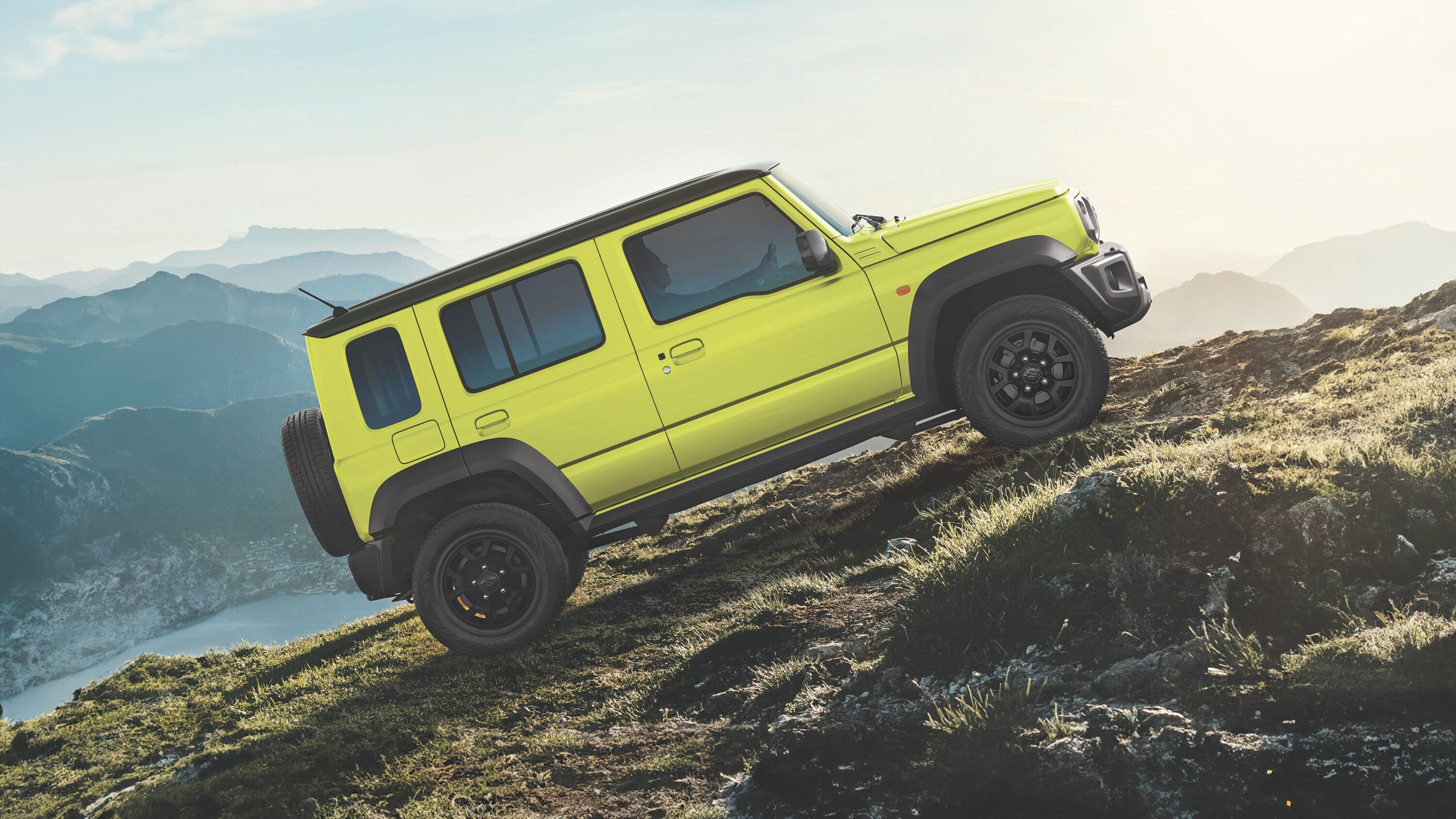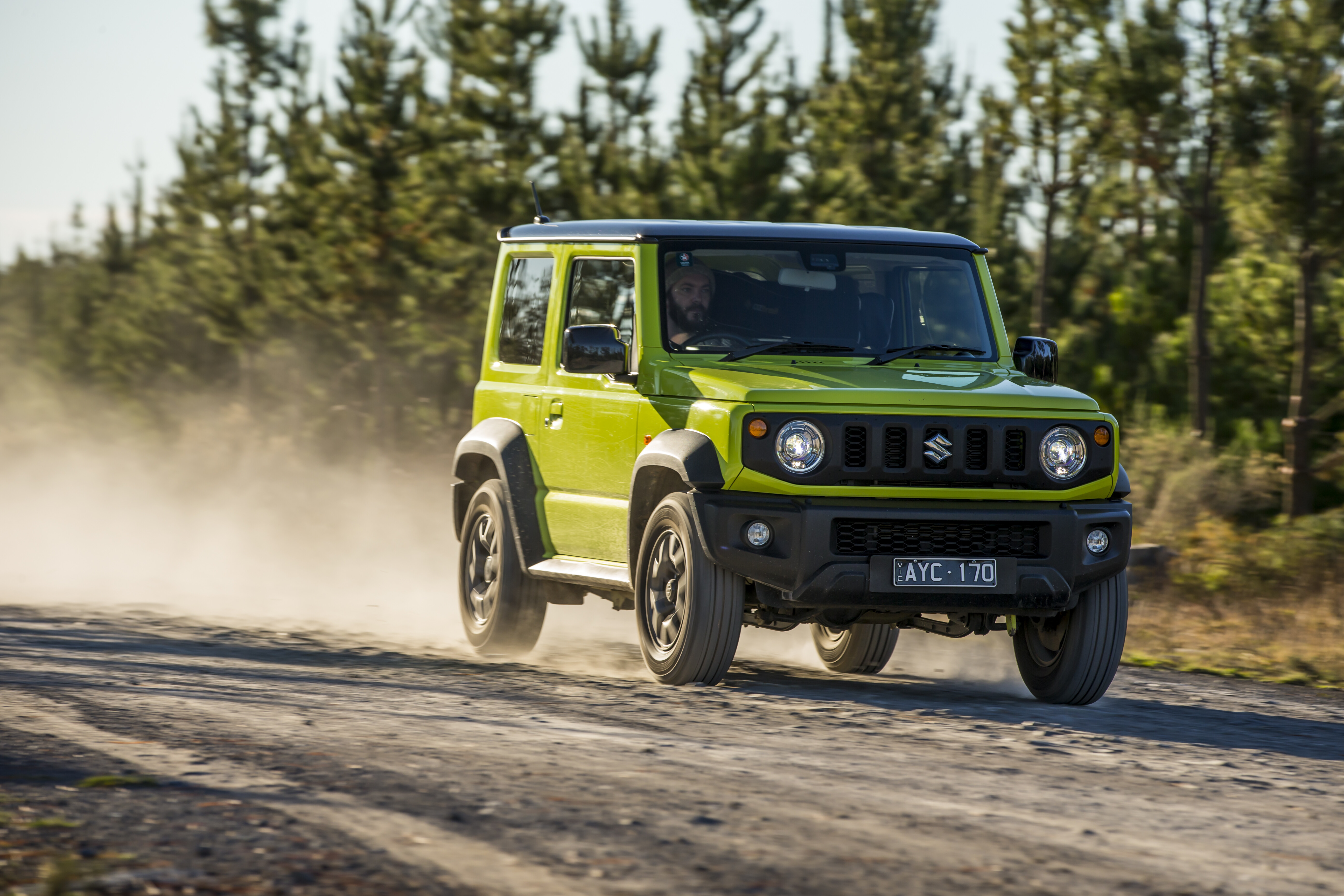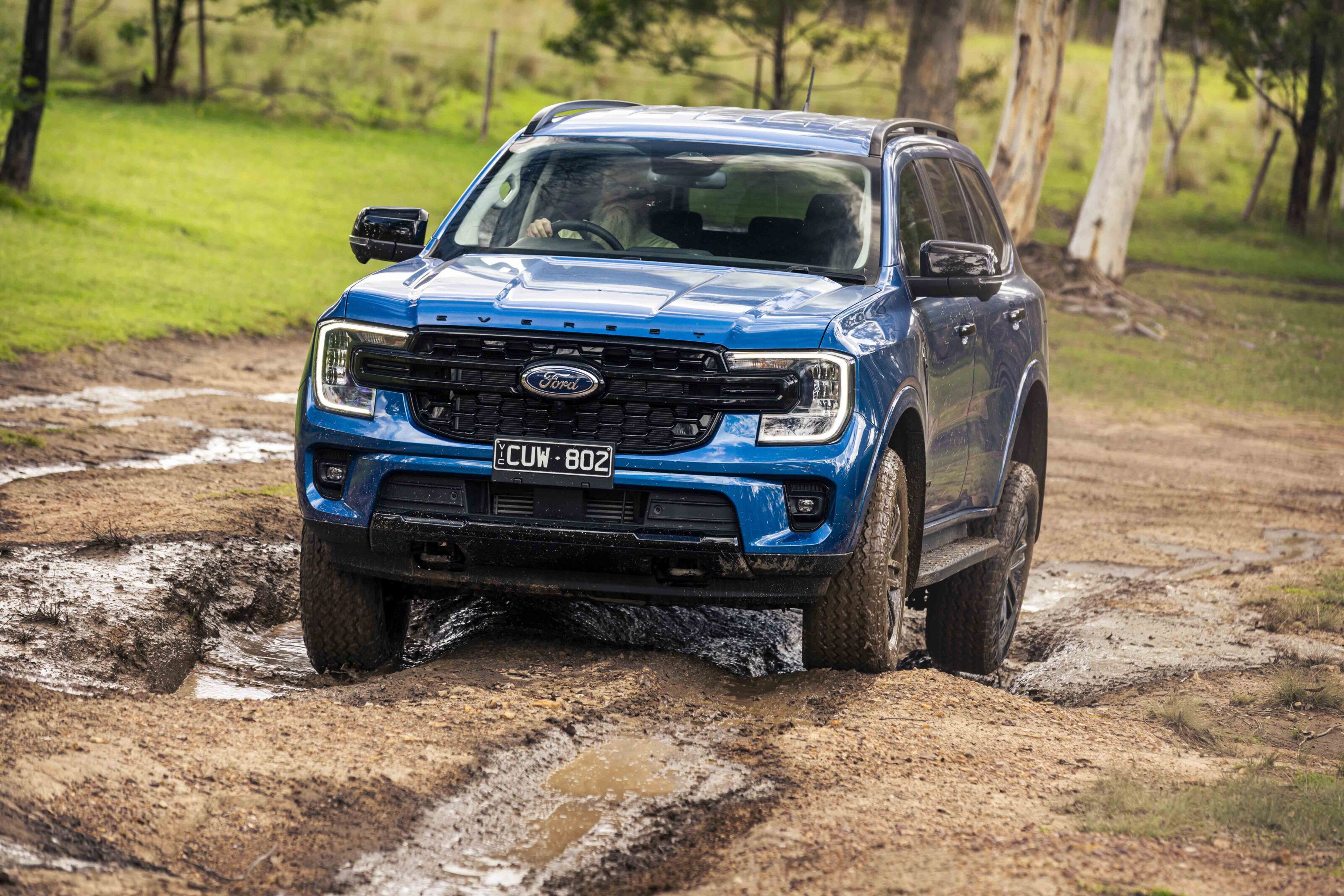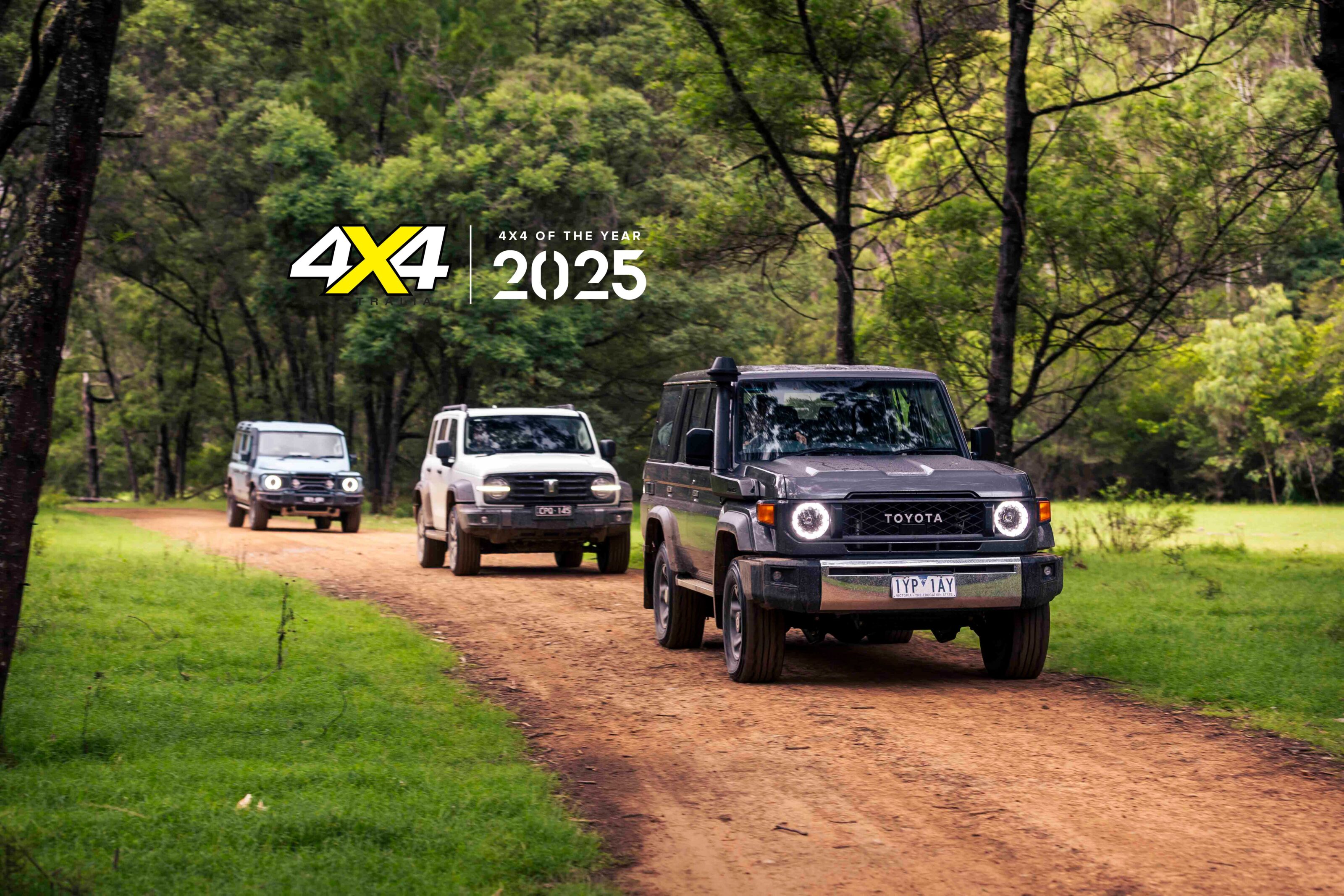Score breakdown
Things we like
- Usable back seat and boot
- Still a mountain goat
- Charming retro appearance
- Solid and reliable drivetrain
Not so much
- Doesn’t go anywhere fast
- Poor on-road manners
- Limited payload
- Low-rent cabin materials
Rumoured since the JB74’s local launch in January 2019, Suzuki has finally provided the five-door Jimny buyers have been begging for. But do the two extra doors really make this dinky off-roader suitable for a big country like ours?
Priced from $34,990 before on-road costs, the four-seat Jimny XL is assembled in India from Japanese-made parts kits. All external measurements are identical bar an additional 340mm between the front and rear axles.
The Jimny XL retains its ladder-frame underpinnings with live axles and iconic appearance, just with a bit more space. You’ll even find the same 75kW 1.5-litre four-cylinder under the bonnet.
Don’t kid yourself that, because it’s got five doors and a bigger boot, the Jimny XL is a do-it-all family car, though. Even with extra space, the Jimny remains closer in ethos to a 70 Series LandCruiser than a small SUV like the Mazda CX-3.
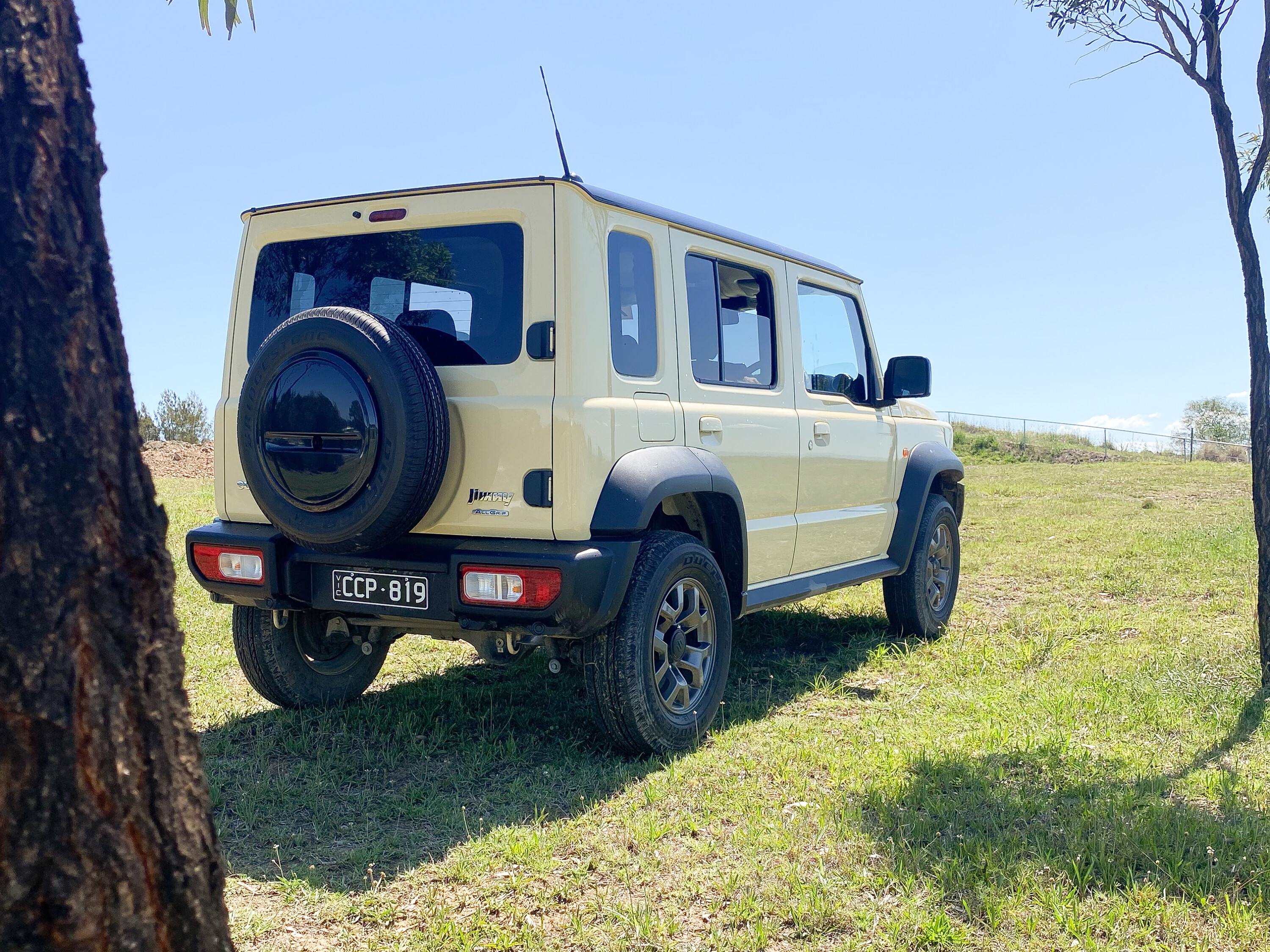
JUMP AHEAD
- How much is it, and what do you get?
- How do rivals compare on value?
- Interior comfort, space and storage
- What is it like to drive?
- How much fuel does it use?
- How safe is it?
- Warranty and running costs
- VERDICT
- Specifications
How much is it, and what do you get?
The XL’s price structure is simple, costing $3000 more than the three-door Jimny in manual and auto guises.
| 2024 Suzuki Jimny XL features | |
|---|---|
| 15-inch alloy wheels | Central locking |
| Four-way manual adjust seats | Cloth upholstery |
| Tilt adjust steering wheel | Air conditioning |
| Digital clock | 9.0-inch touchscreen |
| Wireless Apple CarPlay and Android Auto | USB charge point |
| Four seats | Two-speaker sound system |
| Six airbags | Forward AEB |
| Hill-descent control | Part-time 4WD with low-range transfer case |

How do rivals compare on value?
The Jimny XL’s main rival is the three-door version, and how much space you need will determine the better off-roader for you.
There are a few extra goodies in the XL, such as a 9.0-inch touchscreen with wireless Apple CarPlay/Android Auto and adaptive cruise control in the automatic to aid the value equation. It’s worth noting that since hitting dealers in 2019, the Jimny three-door’s price has climbed from $23,990 to $31,990 before on-road costs.
On-road-focused rivals are worth mentioning as, for a similar asking price to the Jimny, the Mazda CX-3 Touring auto ($34,300) has equal interior space, leather-look upholstery, up-to-date safety systems, and was rated five stars by ANCAP in 2015 – though that rating is now expired.
Also worth considering is the much bigger GWM Tank 300. With its Wrangler-like looks, front and rear lockers, turbo-petrol engine, eight-speed automatic and bulging equipment list, the Tank Lux’s $46,990 drive-away price tag is only about $4000 higher than an automatic Jimny XL.
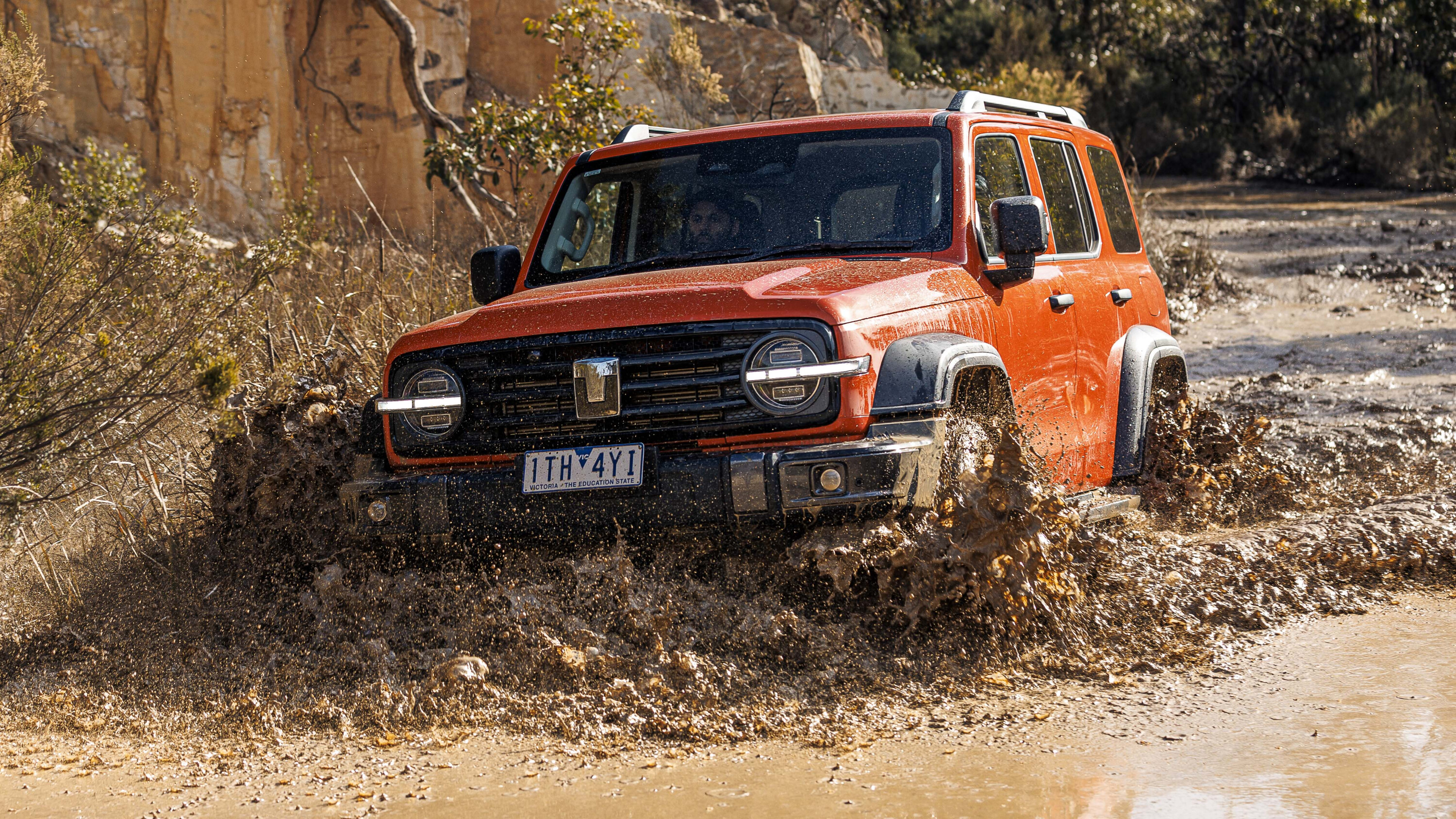
Interior comfort, space and storage
With an extra 34cm between the wheels (don’t worry, it’s still under four metres long) the Jimny XL’s rear seat is comfortable for six-foot adults – a lot more than you can say for a three-door Jimny or even the Mazda CX-3.
It also means the boot is a lot larger, growing from 85L to 211L behind both rows. Folding the seats down is simple but doesn’t create a flat load space.
Oddly, with the seats folded the three-door Jimny has more litres on paper, though the extended load bay of the XL makes it more practical as a farm hand.
Unfortunately, the Jimny XL’s GVM is only 1545kg, meaning a 360kg payload for the manual. With four 80kg adults onboard you’re left with just 40kg capacity for gear.
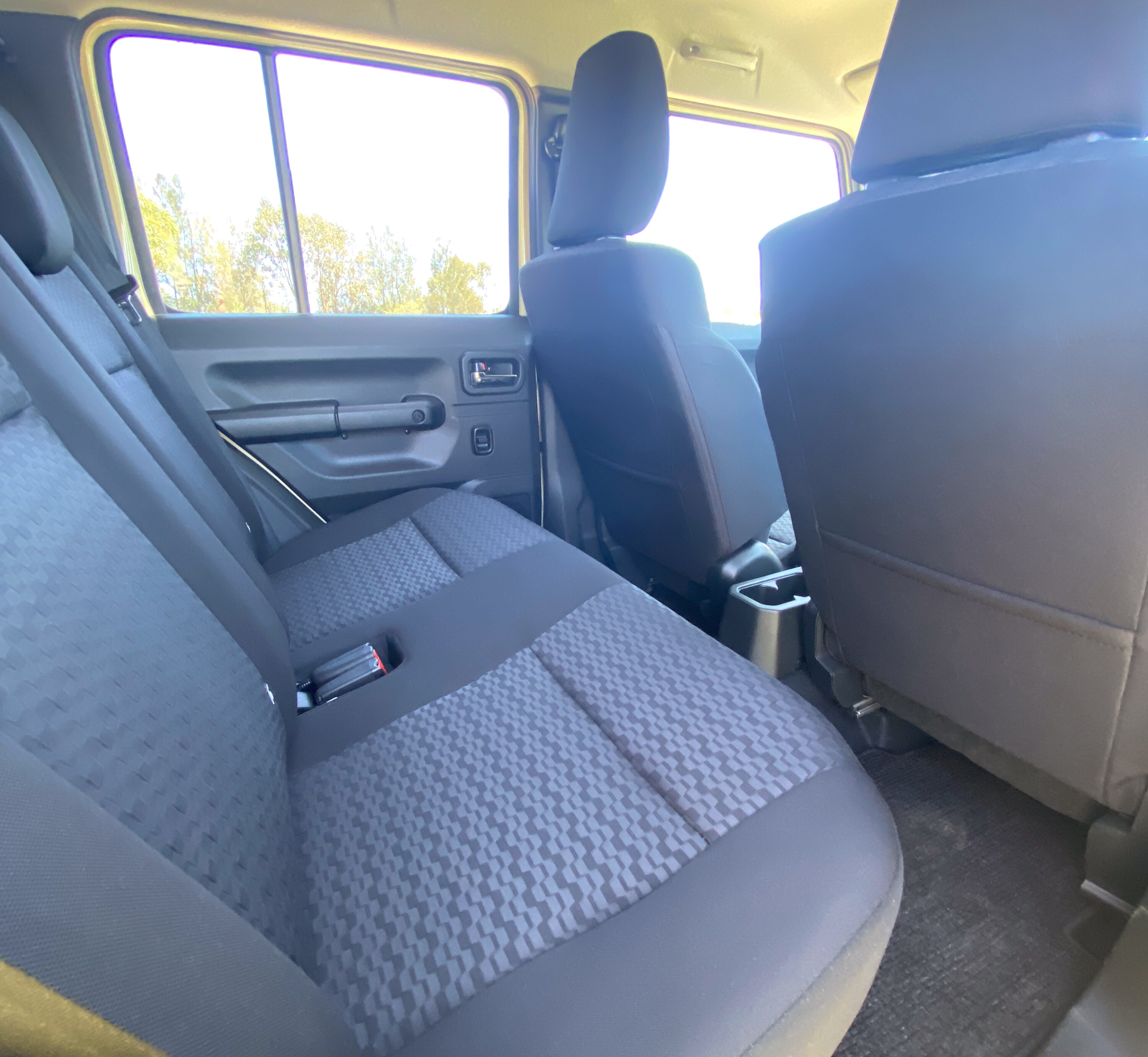
The 9.0-inch touchscreen on the dash looks positively huge and has nice, crisp graphics. There’s also wireless Apple CarPlay and Android Auto, though the two-speaker stereo is weak and there’s no built-in satellite navigation.
The Jimny’s cabin retains all the funky functional touches such as the grab handles and the plastic exposed ‘bolt heads’. Those analogue dials are easy to read and have a digital screen between for extra info.
As the main stack is designed for just two windows, the switches for the rear glass are located awkwardly next to the manual handbrake.
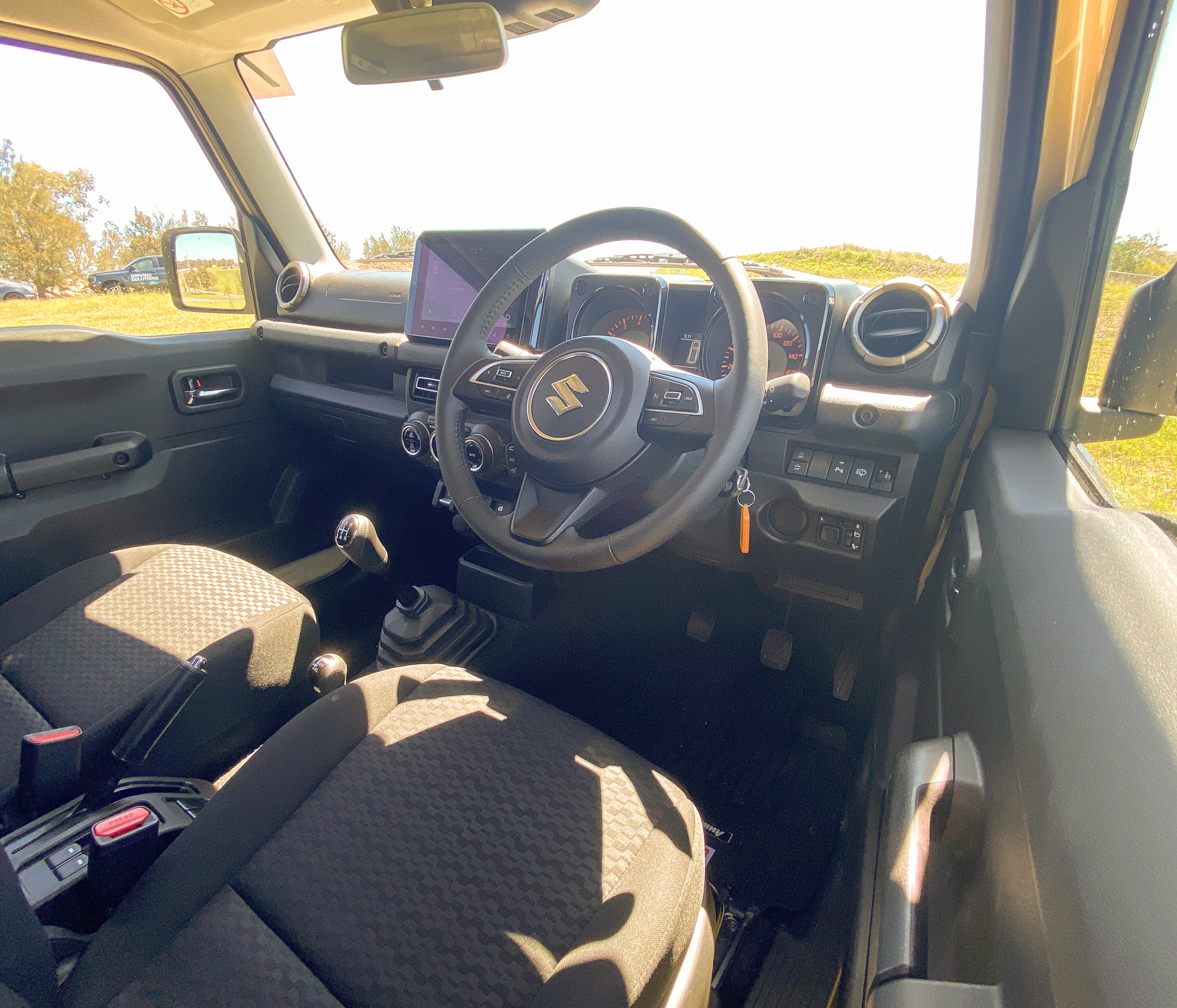
A plethora of hard scratchy plastics is expected and their smell, as they degas in the hot Australian sun, is like sticking your nose inside a cheap Decathlon tent.
The flip-side? The materials are durable and hard-wearing.
It’s the same for the seats, which lack height adjustment. The steering wheel doesn’t telescope, it only goes up and down, so the Jimny requires some body contortion to get comfy. Once you’ve found a spot that works, the firm cloth-upholstered seats are reasonably supportive.
You might be starting to get the picture here. The Jimny is extreme in a sense. It’s either a vehicle that you’ll find completely unsuitable owing to the cheapness of it all, or you’ll fall in love immediately with this eco-friendly rough-and-tumble bush companion.

What is it like to drive?
The biggest criticism leading up the the Jimny XL’s arrival has been an underspecced engine. It uses the same 1.5-litre multi-point-injected four-cylinder as the three-door.
That means a humble 75kW at 6000rpm and wheezy 130Nm at 4000rpm. Paired with the five-speed manual, getting a strop on in the Jimny is loud and uncivilised, though like driving a classic car, you are at least constantly engaged in the process and your surroundings.
With a four-speed auto, the prospect is less appealing. We didn’t test 0-100km/h figures in the 10 minutes we were allotted on the road and Suzuki doesn’t claim a figure. The manual ought to hit the national speed limit in about 12.5 seconds, and the auto closer to 14.
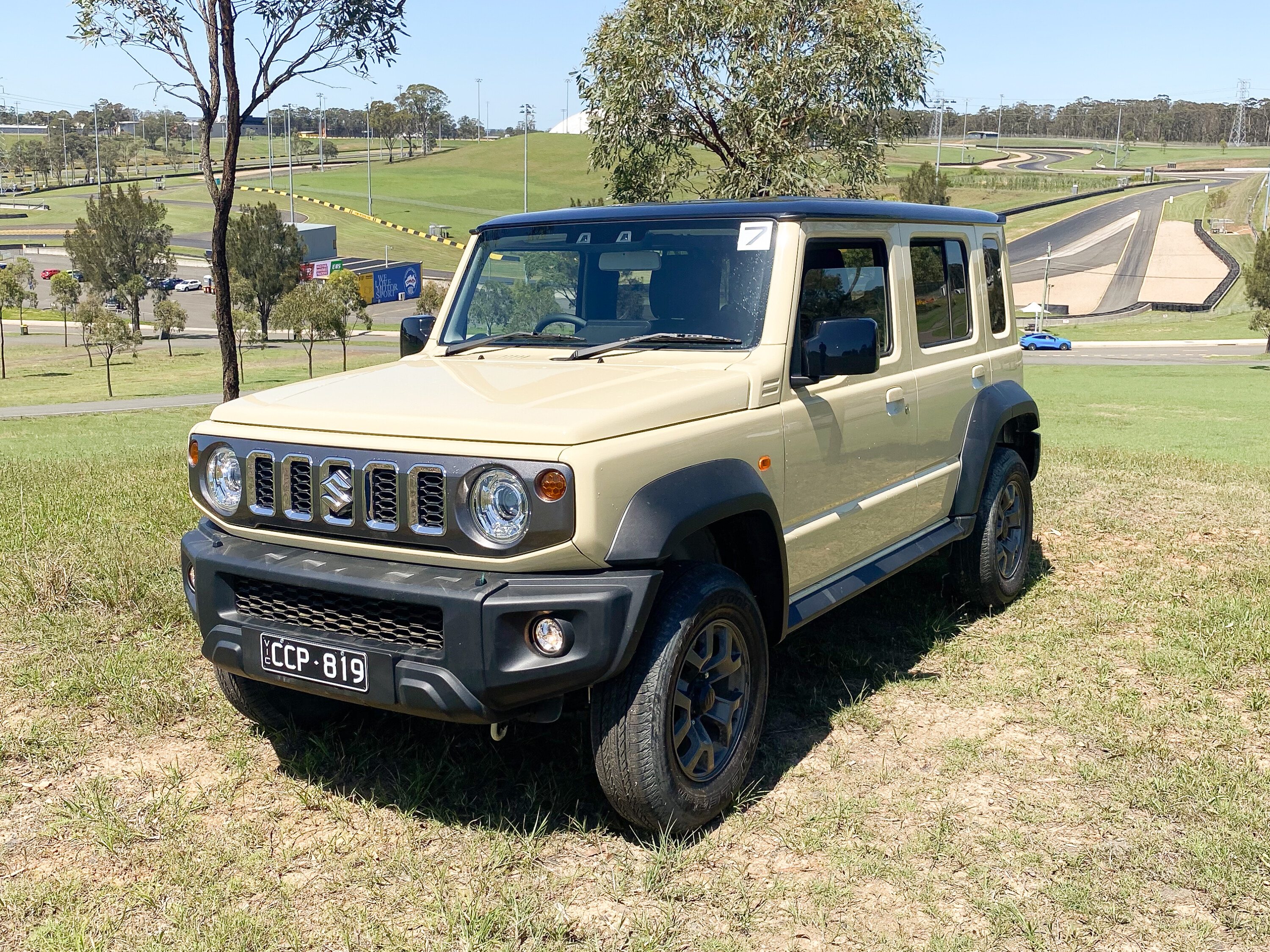
The sluggishness isn’t exclusively a five-door fault as, according to the spec sheet it’s ‘only’ 90kg heavier (which to be fair is nearly a 10 per cent increase due to how light this little Suzuki is) weighing 1185kg in manual trim.
On the road, its 4.25-turn steering rack is ponderous and loads up inconsistently with a dead zone around the centre; not confidence-inspiring, though that’s a good thing. A Jimny can be fun to hustle for experienced drivers who relish a challenge, but for the average punter it’s insecure and aloof.
We weren’t given the chance to sample high-speed dirt roads where the 340mm longer wheelbase would surely aid stability and comfort over the stumpy three-door.
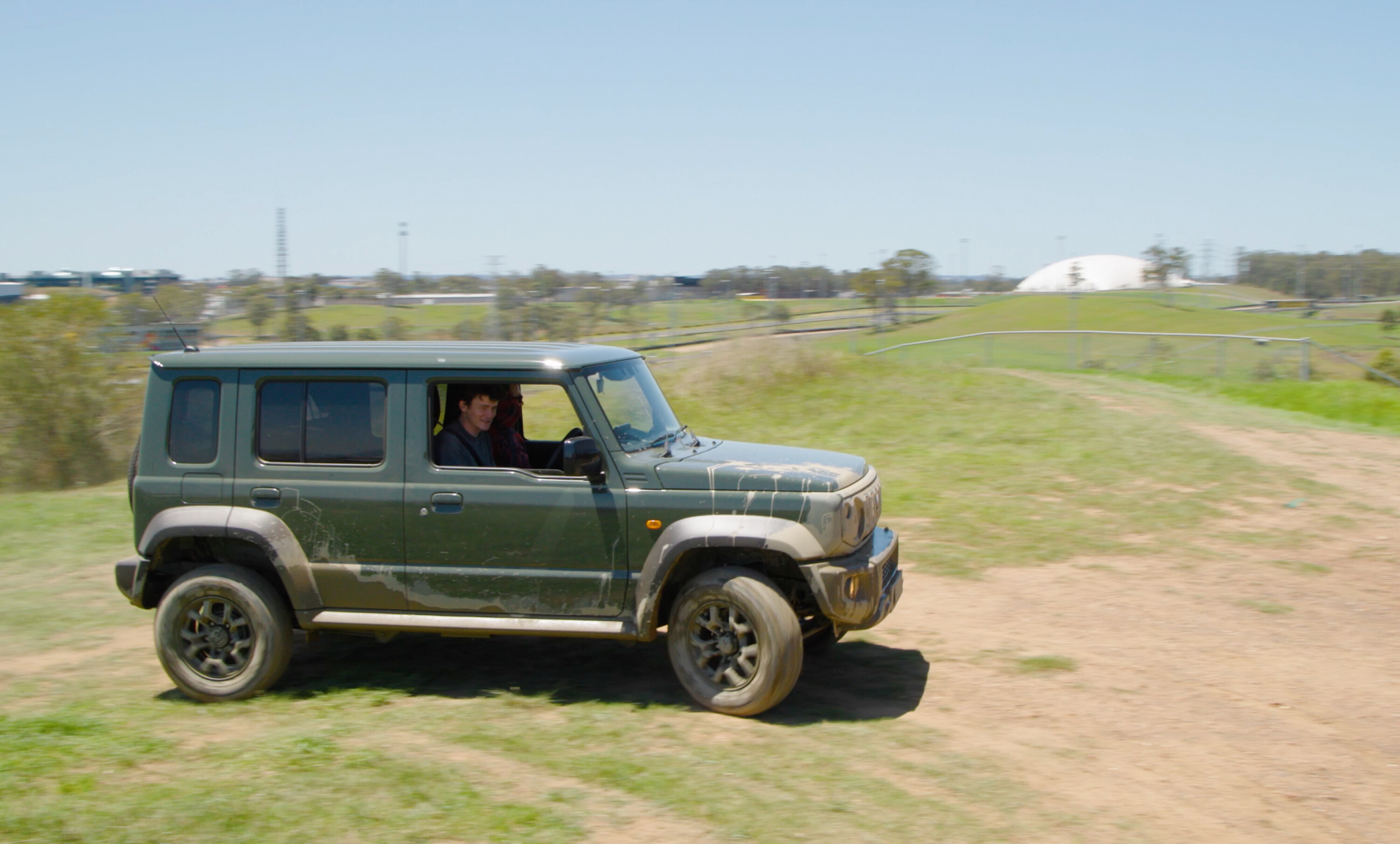
Crucially, the XL hasn’t sacrificed any of its mountain goat persona on technical trails.
Granted, the underbody and diffs scraped where they probably wouldn’t have in a three-door but, without one for direct comparison, it’s hard to say how pronounced the difference is.
The figures confirm that the five-door is less capable. From the same 210mm ground clearance, its ramp-over angle drops from 28º to 24º. The approach angle is 36º and departure 47º, while the only real Jimny shortcoming is a wading depth of 300mm that we nearly maxed out in a fairly shallow puddle.
Lift kits are readily available for the three-door Jimny so it won’t be long before the market is flooded with suspension kits and GVM upgrades for the XL. And aside from getting hung up on a few moguls, the agile Jimny shrugged off the off-road park’s technical descents.

There’s a simple hill-descent control that works neatly, limiting the car to 5km/h in low range and braking individual wheels for controlled descending.
The Jimny XL is very easy to place thanks to a short bonnet, thin pillars, and a big glasshouse.
Both manual and automatic Jimny XLs default to rear-drive in two high (2H). Moving the stubby lever back engages four-wheel drive, and pushing down selects low-range for technical trails. Without a locking rear differential (and with peak torque at 4000rpm), the Jimny isn’t the most capable crawler.
The correct technique involves a little more speed, commitment and revs than a diesel HiLux, for example. And where off-roading can be tense and quiet in expensive machinery, the plucky Jimny loves to get stuck in.
The Jimny XL wears 195/80R15 Bridgestone Dueler all-terrain tyres that are a good starting point for entry-level off-roading. For greater capability, you could fit more hardcore rubber in a bigger size. We’ve found 215/75 R15 or 235/75 R15 to work well on Jimnys.
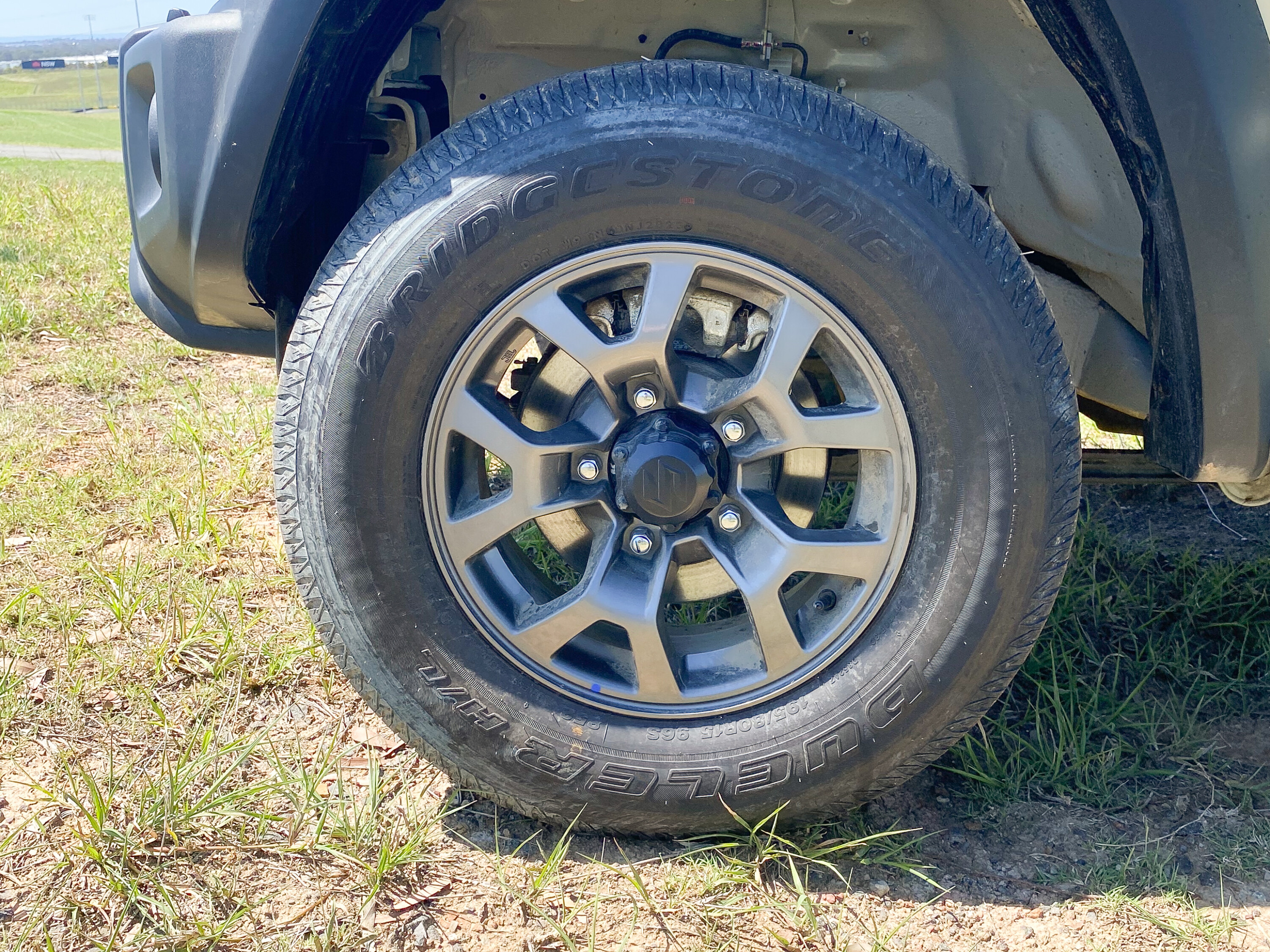
How much fuel does it use?
In the ADR 81/02 combined consumption cycle, the Jimny XL manual is rated at 6.4L/100km and the automatic 6.9L/100km.
How safe is it?
The three-door Jimny scored three stars in 2018 ANCAP safety testing.
Adult and child occupant protection scores were decent (73 and 84 per cent), though lacklustre safety assist systems and vulnerable road user protection let the Jimny down.
The five-door Jimny XL has not been rated by ANCAP. It’s fitted with six airbags, stability control and frontal AEB.
Warranty and running costs
Suzuki covers the Jimny with a five-year/unlimited-kilometre warranty.
Servicing is due every 12 months or 15,000kms.
Over five years, the Jimny XL will cost $2265 in maintenance under Suzuki’s capped-price servicing program. That works out to $453 per year.
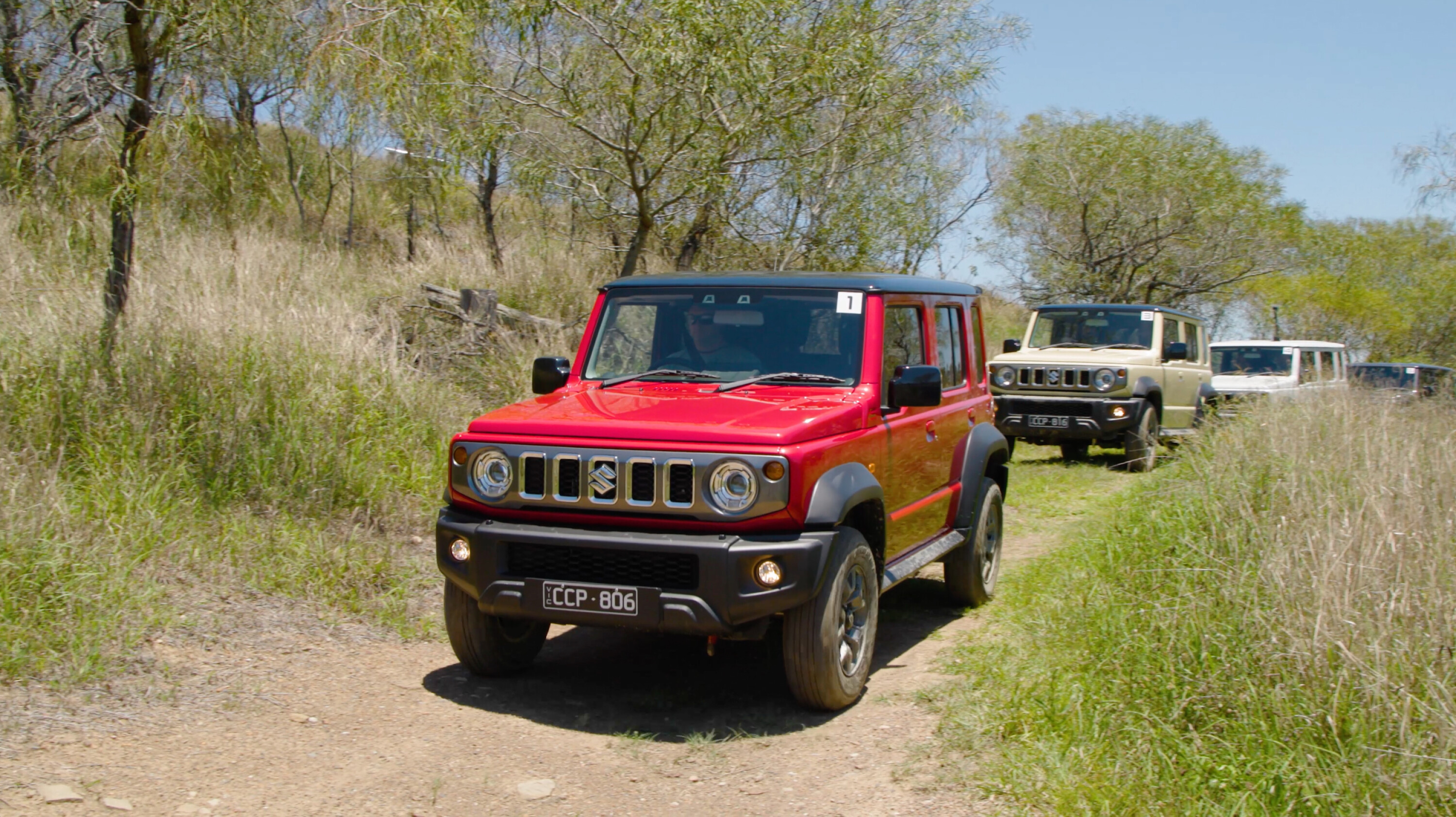
VERDICT
If you’re a Jimny die-hard looking for a glowing report of the new Jimny XL’s added cargo and people space then you should probably stop reading and head to your nearest Suzuki dealer. The wait’s already out to nine months.
But in five-door form, the Jimny is not a do-it-all family car. It can’t hold a candle to an equivalently priced small SUV in a swerve-and-avoid or overtaking manoeuvre and it lacks expected safety systems.
If you see the new Jimny XL as a quirky alternative to a Mazda CX-3 or Volkswagen T-Cross, make sure you test drive the Suzuki extensively before handing over any cash.
However, it is a superb vehicle for those who ‘get’ Jimnying. It’s an attainable and efficient 70 Series or Jeep Wrangler analogue; a Jimny done long. A win for enthusiasts looking for a more usable off-roader.
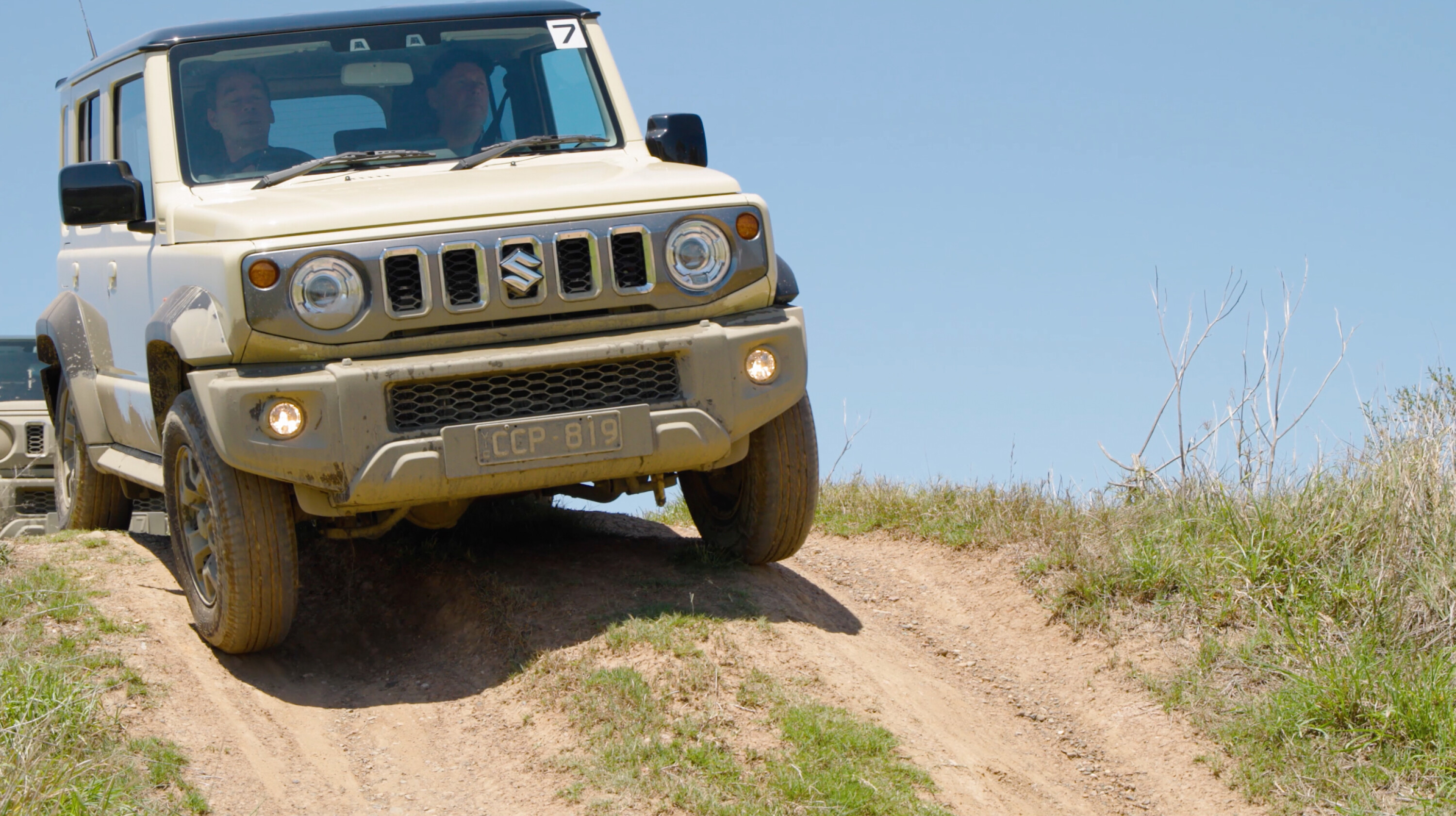
Score breakdown
Things we like
- Usable back seat and boot
- Still a mountain goat
- Charming retro appearance
- Solid and reliable drivetrain
Not so much
- Doesn’t go anywhere fast
- Poor on-road manners
- Limited payload
- Low-rent cabin materials


